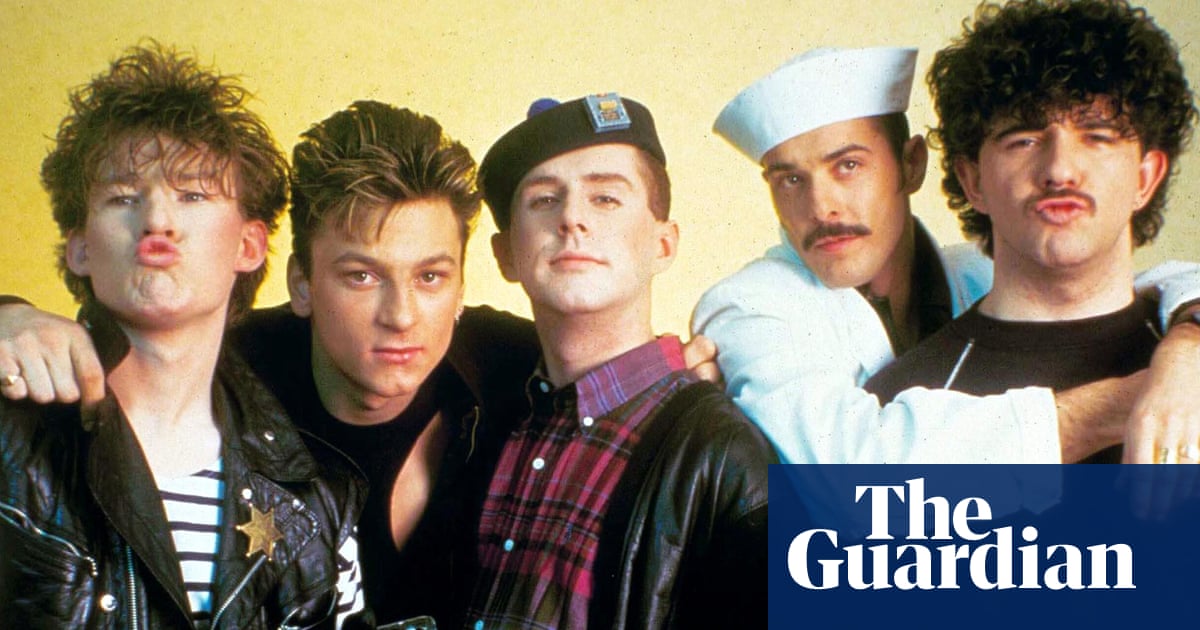We are all going to die. Yet this inescapable fact often goes unspoken. Talking about death can be hard, and many find themselves unprepared when it comes calling.
So The New York Times asked readers for their questions on death and dying. We received a wide range of queries — on topics including estate and funeral planning, managing grief, taking control of your final days and what (if anything) comes next.
Below, we’ve answered some of the most common questions. If you have a question that’s not addressed, you can submit it through the form at the bottom of the page.
Someone close to me just died. Where do I even start?
First, take a breath. It’s a lot. Enlist a few family members or close friends to help you navigate the minutiae as you process your grief.
The body will have to be transported from the place of death. Usually a mortuary or funeral home will pick up the body. It’s possible that the deceased left instructions — it could be in a will, or in a separate document — and may even have made arrangements with a particular funeral home. If not, you’ll have to research the options quickly. A mortuary may offer few services beyond transferring and preparing the body, while a funeral home will guide you through planning for a service. Either will submit the paperwork for obtaining a death certificate. Order five to 10 copies — you’ll need them later.
Did the person who died have children or pets? Make sure there is someone to care for them while everything is being figured out. If the person lived alone, someone should go to the deceased’s home to empty the fridge and make sure the doors are locked.
Inform family, friends and the deceased’s employer. Offload tasks when you can. You shouldn’t have to do everything yourself.
Of course, there’s much more to think about. This checklist from AARP gives a good outline of what to do in the days and weeks after a death.
How do you plan a service?
Planning typically starts with selecting a funeral home. You can search online or ask people for recommendations, and you may want to speak to more than one before deciding. The funeral director will help guide you through options and take care of certain logistics, such as transporting and preparing the remains, filing a death certificate and coordinating with the cemetery. You don’t have to work with a funeral director except in the several states — including New York, New Jersey, Illinois and Nebraska — where it is required for at least some part of the process.
Some of the major considerations include:
- Deciding on a traditional burial or cremation
- Buying a casket or urn
- Will there be a viewing of the body? If, yes, embalming, clothing and accessories may be necessary.
- Choosing the date, time and location of the service. Will it be held at the funeral home, a place of worship or somewhere else? Check the venue’s availability.
- Selecting people to lead and speak at the service
- Choosing a cemetery if the person does not already own a burial plot
- Making arrangements for a reception or gathering after the funeral
There are helpful checklists on Wellabe.com and Funeralocity (where you can also search for funeral homes in your area).
What is the best way to inform people of a death?
How you deliver the news may differ depending on whom you’re contacting, your relationship to them, their relationship to the deceased and how you typically would communicate with them. For some people, a call is the most respectful and appropriate way. For others, a text, an email with a long BCC list or a public post on social media might feel most natural.
However you communicate the news, grief experts suggest being concise and direct. Start with language that lets the recipient know bad news is coming. Then include the person’s name, your relationship to them (if not clear), and the date of their death. You don’t have to include details of the cause of death, but saying something about it may prevent you from having to field a lot of follow-up questions. If arrangements have been made for a funeral, include that information.
How do you write an obituary, and where can you publish one these days?
Many newspapers, including The New York Times, feature paid death notices — short obituaries that people submit for a family member who has died. You can find information about how to submit an obit on a publication’s website. Or you can search publications and submit an obit on Legacy, which places notices in outlets around the country. Prices may run between $50 and $300, depending on the publication, length of the notice and whether it runs online or in print. You could also make an online memorial instead of a traditional obituary.
However you choose to publish it, an obituary serves as both an announcement of death and a celebration of a person’s life. It can be simple and formulaic or more personal and creative. One typically includes:
- The deceased’s name, date of birth and age at death
- Birthplace and where the person lived
- Education and career highlights
- Interests, hobbies and accomplishments
- Surviving family members
- Memorial service details, if published before the service
Read more: How to Write an Obituary
I am struggling with grief. Where can I find help?
What can I do now so my death is not a burden on my family?
Asking that question is a good start. You can help by making as many decisions as possible beforehand, and making those preferences known. Think about whether you’d want to be put on life-support if you could no longer breathe or eat on your own, what you want done with your body after you die, who will care for your children and pets and whom you want your assets to go to. Then, talk about the answers with family. The conversations may feel uncomfortable, but they will help your family members to understand your wishes — and what you don’t want — before they have to make difficult decisions.
What documents should I have in place?
At the very least, everyone should have a will. A will is a legal document that lays out who will inherit your assets (including money, real estate and valuable possessions) and who will assume guardianship of children or pets. “Ideally, everyone should write up a will, including young people, each individual spouse and people living with partners, even if you think you don’t have much to pass on,” Marcia Mantell, a retirement consultant in Plymouth, Mass., previously told The New York Times.
You don’t necessarily need an estate lawyer to help you prepare a will. It’s easy to find templates for simple wills online; just be sure that you choose one that includes the legal language required in your state. Having it reviewed and notarized by a notary public will ensure that it conforms to state law. Louisiana is the only state in which notarization is mandatory. Elsewhere, you typically need two witnesses who are not beneficiaries.
Do I need a health care proxy or a power of attorney?
Both are a good idea. To specifically allow a designated person to make health care decisions if you cannot, you need a medical power of attorney or a health care proxy. (Different states use different nomenclature and may offer both options; in those cases, a health care power of attorney may confer broader rights than a health care proxy.) In addition to naming a health care proxy, you may want to create an advance health care directive (which includes designating a proxy) or a living will. These are legal documents in which you specify the treatments and end-of-life care options you do or do not want, such as being resuscitated or put on a ventilator.
Power of attorney is a document that gives a person you trust the legal authority to act on your behalf — by managing business and financial decisions, for example. In order for the power of attorney to remain in effect in the event that you are incapacitated because of physical or mental disability and after your death, it must be what is called a “durable” power of attorney. That allows the appointed person to continue to manage your affairs.
Should I set up a trust? And if so, why?
Trusts are more complicated than wills and likely to be more expensive to set up, but they offer more options and greater control over how and when your assets are distributed. For example, you may set up a trust for children that releases money after they’ve reached a certain age or that spreads out dispersals over time. Transferring assets through a trust may also reduce estate, gift or income taxes.
What is the most cost-effective way to get affairs in order?
Consider using a free estate-planning document — like AARP’s two-book kit, this printable organizer from the A.C.L.U. or this one from the Haverford Trust Company — to organize your contacts, financial accounts, the location of your will and more. This type of document will not only be helpful to ensure your information is all in one place when the time comes, but also can serve as a reference list of what needs to be done now.
You may be able to set up a free consultation with an estate lawyer who can walk you through what your situation requires and provide an estimate of cost for legal services.
How can I ensure my wishes are carried out if I don’t have next of kin or don’t share the same values as my family members?
An advance directive outlining your wishes “is legally recognized but not legally binding,” according to the National Institute on Aging. That means your health care provider or proxy may make decisions that do not align with your preferences. Choose a proxy whom you trust to handle potential conflicts; it does not have to be a family member.
What will happen to my pet?
To ensure your pet is taken care of, plan ahead. If you have a trusted family member or friend whom you’d want to take your pet in the event of your death, share your wishes now. You can formalize it by including the arrangement in your will. You can even hire a lawyer to set up a pet trust. Like a trust fund for children or grandchildren, a pet trust is a legal document that specifies who will assume care for your animal and that provides money for veterinary bills, food and other related expenses.
What should I do about email, social media, banking and other accounts?
Treat them as you would other pieces of important property. Create a document stipulating how you want your online accounts and all digital content handled when you die and designate a representative, like a family member, to take control. Keep the document with your other estate papers. You can also add a legacy contact to your Facebook, Google and Apple accounts — someone to take over your account after you die.
Create a list of usernames and passwords to help your representative log into your accounts. Don’t forget to include recurring automatic payments like streaming service subscriptions and annual memberships such as Amazon Prime or DashPass. Store your passwords someplace safe — either in an online password manager or a physical lock box. Remember: Your representative will need to get into those, too. And if for some reason that person can’t, here’s a helpful guide from Wirecutter on handling someone else’s digital accounts.
Read more: How to Prepare for Your Digital Afterlife
Is “death cleaning” a useful task?
“Death cleaning” refers to the task of going through your possessions, doling out meaningful keepsakes and mementos to loved ones and getting rid of clutter — so your surviving friends and family won’t have to later. “I don’t think that’s nice to leave that to your own children,” said Margareta Magnusson, whose 2017 book, “The Gentle Art of Swedish Death Cleaning,” popularized the term. The practice gained steam during the coronavirus pandemic, when people were stuck in their homes facing mortality — surrounded by a house full of stuff.
People who’ve done it say it can be difficult, emotional, cathartic and well worth it, leaving both the people cleaning and their kin lighter and less burdened.
Read more: How to Discover the Life-Affirming Comforts of ‘Death Cleaning’
What if I don’t want certain treatments?
The American Medical Association’s code of ethics specifies that doctors have a responsibility to respect patients’ choices for what kind of care they receive — or, more important, don’t receive — at the end of their lives. That may include forgoing treatment for a terminal illness or other efforts to prolong life, such as CPR or being put on a ventilator, and choosing to leave the hospital before doctors want to discharge you (in technical terms: against medical advice).
It’s a good idea to be proactive about your wishes. Put them in writing, in a document known as a living will or advance health care directive. You can ask your doctor to write you a D.N.R. (do not resuscitate) order, which goes into your health record and shows that you don’t want emergency interventions if your heart or breathing stops, while at home or in the hospital.
Talk to your family and close friends about your wishes. Make sure they know if you have an advance directive, what it says and where it is. Help them understand why your preferences are what they are. They may have to advocate on your behalf.
What is the difference between hospice and palliative care?
Both hospice and palliative care focus on managing symptoms of chronic or terminal illnesses and improving a patient’s quality of life. Palliative care typically involves a team of medical providers in addition to a person’s physician and treatment team, and is given in addition to prescribed treatments.
Like general palliative care, hospice focuses on pain management and day-to-day comfort, but it is specifically for care at the end of life. In order for a patient to qualify for hospice, a physician must certify that they have a life expectancy of typically six months or fewer. If a patient has a terminal diagnosis, medications intended to treat the underlying condition are discontinued, and the illness is allowed to run its course.
Many people put off entering hospice care until they are very close to the end. That may help explain why more than half of hospice patients die within 18 days of beginning care, according to the National Hospice and Palliative Care Organization. Experts say that patients can enjoy a longer period of comfort at the end of their lives by entering hospice earlier — which may mean forgoing difficult and aggressive treatments, like chemotherapy or surgery, that can delay but not prevent death.
Read more: How Does Hospice Care Work?
I want to die at home. How can I ensure this happens?
You’re in good company. Most people (seven out of 10, in one poll) say they would prefer to die at home. And more people now die at home than in a hospital. But it’s widely believed that many people who want to, in the end, don’t. Some planning ahead might help narrow that gap.
If you are eligible (that is, if a doctor says you have just months to live), enrolling in home hospice care will ensure that you have the option to die there. (Expect to spend at least a week or so researching hospice programs and going through the process of application and admission before hospice services start.) For those who do not qualify for hospice, long-term care at home may be an option.
How do I pay for end-of-life care?
Medicare, Medicaid and some private insurance policies cover the cost of hospice care at a hospice care facility, in home or in a nursing home.
Long-term care is more tricky — and expensive. Medicaid covers a lot of long-term care, but not necessarily everything for everyone. Medicare does not cover long-term care. Some people buy long-term care insurance that pays for services should you need them. Often, the costs of care falls on family members who provide it. Many family caregivers spend upward of $7,200 a year on medications, supplies and other expenses, according to AARP research. Plus, there may be added cost from lost wages.
Where can you find emotional support if you have a terminal illness or are taking care of someone who does?
Grief doesn’t wait until after someone dies. It hits you when you’re facing death or caring for someone who is. So do a raft of other complicated feelings — anger, loneliness, fear, sadness, anxiety.
If you’re sick, ask your health care team about setting you up with a social worker. Hospitals and hospice programs have staff dedicated to talking about the emotional side of illness and dying. They may also connect you with a spiritual adviser. You can also consider working with a “death doula” or “end-of-life doula.” These are nonmedical professionals who will help you navigate complex feelings, educate you on what to expect, advocate for your end-of-life choices and work to make your final days more comfortable and peaceful.
For caregivers, too, the stress can be overwhelming. The physical and emotional labor are exhausting and it can be hard to process the range of feelings, especially negative ones, like resentment or impatience. Seek out caregiver support groups or mentoring programs to talk to and hear from people who get what you’re going through. You can ask a hospital or hospice social worker for recommendations, or search online for groups in your area. Caregiver Action Network has a help line you can call, as well as tips and information for caregivers organized by topic and health condition.
And don’t try to do everything yourself. Because you can’t. Accept help when it’s offered. Take time for yourself when you need it — even if that sometimes means making yourself unavailable. This worksheet from the National Institute on Aging can help you divide tasks among multiple family members. Another option is respite care, which is short-term professional caregiving that allows you to have a break. It may be covered by Medicare or subsidized by Medicaid. You can search for respite care and other caregiver services by state here.
What is medical aid in dying, and is it legal in my state?
Medical aid in dying (MAID) is the practice in which a terminally ill patient may consult with a physician to obtain a lethal dose of prescription drugs. The person may then decide to hasten death by taking the drug at a chosen time, or wait and let the illness run its course. (More than a third of patients who receive a prescription don’t take it, research has found.) It is sometimes called physician-assisted death. Proponents often refer to MAID legislation as death with dignity or right to die laws; opponents may call it assisted suicide.
In May, Delaware became the 11th state to legalize MAID — after Oregon, Washington, Montana, Hawaii, California, New Mexico, Colorado, Maine, Vermont and New Jersey. It is also legal in the District of Columbia. The New York State Legislature passed a medical aid in dying bill in June (it wasn’t clear whether the governor would sign it). At that time, another 16 states had bills in consideration. The laws are not the same in each state, but typically they require: a prognosis of six months or fewer to live, written and oral requests for the medication and sign-off from two physicians. All the current laws, with the exception of those in Vermont and Oregon, apply only to residents. MAID is also legal in Canada, where the law is no longer restricted to people with terminal conditions for whom death is imminent.
The Times has covered the hotly debated topic in the United States, Canada and Europe.
What are the stages of death?
Just like every other part of life, the final days differ for each person. But medical experts and hospice care workers describe common patterns. For many people — regardless of underlying conditions, and not accounting for other factors that may affect a person’s experience of dying — the progression looks something like this:
In the weeks before death, people often eat less and less, and sleep more and more. Many feel increasingly restless, agitated or confused, and some even hallucinate. Blood pressure, heart rate and other vital signs become irregular or slow down, and those changes are likely to become more pronounced in the days leading up to death. At that point, people often have trouble swallowing and develop bluish skin blotches or facial drooping. Breathing can take on a staccato pattern — sometimes fast and shallow, and then deep and loud, at times stopping entirely for a brief period. A person’s body might get cold, or heat up with fever. Consciousness fades.
What is a death rattle?
“Death rattle” is the term for a noise that often emanates from the back of the throat when a dying person breathes. (It happens at least once in about 40 percent of patients, by one estimate.) It may start hours or a couple of days before death. At this time, a person typically has trouble swallowing and clearing the throat, so mucus and saliva build up in the airways. As air moves in and out through this buildup, it can sound like snoring, gurgling or rattling. It may even seem as if the person is choking, though that is not what is happening. Doctors believe that the death rattle isn’t painful or uncomfortable — the person is most likely unaware it’s even happening. But it can be distressing to witness.
Can a dying person still hear loved ones if incapacitated?
We don’t know. But anecdotally, palliative care professionals say it seems so, and they often encourage people to talk to a dying friend or relative. There is some evidence that coma patients can hear and understand what is said around them. And one small study from 2020 recorded brain activity in unconscious patients nearing death, and found that they responded to sounds in much the same way that young, healthy people did.
Will I know I’m dying when it happens?
Maybe. Maybe not. Sometimes it seems as if a person intuitively knows that death is coming. Interviews with people who were resuscitated after their hearts stopped suggest that they may have had some awareness during the event. But it’s impossible to know.
Is it painful?
It can be. A lot depends on the cause of death and whether the dying person is given medication to manage pain, according to the Cleveland Clinic. If a person has a traumatic injury or is in agony from the late stages of disease, suffering may continue up until the end. On its own, though, dying probably isn’t as bad as one might think, said Kathryn Mannix, a palliative care expert and the author of “With the End in Mind: How to Live and Die Well.” She describes natural death as a gentle process during which people slip in and out of consciousness as their breathing slows to a stop.
For a “relentlessly frank and graphic description of the multiple ways human life achieves its terminus,” as The New York Times Book Review put it, read “How We Die: Reflections on Life’s Final Chapter,” by the physician and writer Sherwin B. Nuland. Or check out “Advice for Future Corpses,” by Sallie Tisdale, a writer, former palliative-care nurse and Zen Buddhist.
Here are more books about death and dying, reviewed by The Times.
What happens to your body after you die?
You may be familiar with the term rigor mortis, which describes the stiffening of muscles and joints after death. But before that happens, the body relaxes completely. This may cause skin to sag and often results in the bladder and rectum releasing. (Yes, that means a lot of people soil themselves when they die.) The body cools and blood, pulled down by gravity, settles and pools, so the skin becomes pale and splotchy. After a few hours, rigor mortis sets in. It typically lasts a couple of days and then the body relaxes again.
Why are funerals so expensive?
The median cost of a funeral was $8,300 in 2023, according to the National Funeral Directors Association ($6,280 for a funeral with cremation). This includes the removal and transferring of remains to a funeral home, preparation of the body (embalming, grooming and the like), a casket (or urn), transportation in a hearse, use of the funeral home, staffing and other service fees. Additionally, families may have to pay thousands for a cemetery plot, grave marker and burial, plus incidentals like flowers and food.
What is involved in a traditional funeral and burial?
The funeral home will send someone to pick up the body from the place of death and transport it to the facility. The funeral director will guide the family through the planning process, including deciding whether to hold a service at the funeral home or elsewhere, choosing a casket and grave marker and preparing programs or memorial cards. For open-casket viewings, the body will be embalmed, meaning the blood is pumped out and replaced with a fluid preservative. Embalming is not required or necessary for closed-casket services. The funeral home brings the body to the burial site, where the casket will be lowered into the ground by cemetery staff.
Read more: Funeral Homes Get Hip
I want a home funeral. Is that legal in my state?
How does cremation work? Is it better for the environment?
In cremation, high heat is used to dissolve body tissues, leaving behind only bone. A body is placed in a casket or simple container and slid into a furnace known as a cremation chamber, where it is heated at between 1,000 and 2,000 degrees Fahrenheit for one to three hours. The remaining bones are then cooled and ground into a powder, commonly referred to as ashes, although they are not actually ash. (The proper term is cremains.)
Though cremation itself is a short process, it may not be until days after a body arrives at the crematory that the remains can be retrieved. Besides burying, scattering or putting ashes into an urn, they can also be incorporated into jewelry and keepsakes, added to tattoo ink or made into a lab-grown diamond. A few British companies put cremains into memorial fireworks.
Nearly two-thirds of people in America are cremated. One benefit is that it is significantly less expensive. It’s not as clear how much better it is for the environment. Cremation doesn’t use up available land the way burying a casket does. However, it requires a lot of energy and results in the release of carbon dioxide gas, mercury and other pollutants.
A note: If you plan to scatter cremains somewhere, be sure to confirm that it’s legal to do so. (New York, for example, allows them to be scattered in city parks, with a few caveats.)
What is water cremation, or alkaline hydrolysis?
Alkaline hydrolysis is an alternative to standard cremation that uses a chemical bath, heat and pressure rather than burning fuel. A combination of alkali salt and water dissolves protein, blood and fat in a specialized machine. The process produces a sterile fluid, which is discarded, and the weakened bones are crushed into ash. Its carbon footprint is about a tenth of that of flame-based cremation. Also known as water cremation, flameless cremation, resomation or aquamation, this process is legal in about half of the states and expressly illegal in New Hampshire.
What are “green” burials?
Green burials are defined mainly by what they don’t include: embalming chemicals, concrete grave liners, steel caskets and other nonbiodegradable materials. For a burial to be considered “green,” the body or cremated remains must be in a biodegradable container or wrapped in a shroud of natural fabric. The details are up to the individual. Many conventional cemeteries require that graves be lined in plastic or concrete, and therefore can’t accommodate green burials. There are also “hybrid” cemeteries that allow both traditional and green burials.
How does “human composting” work?
Unlike the process that unfolds in typical compost heaps, human composting takes place in a dedicated facility. Bodies are placed on a bed of plant materials, like straw, wood chips and alfalfa, inside a moisture- and temperature-controlled cylindrical vessel. Staff members rotate the vessel weekly to aerate it, creating the ideal conditions for decomposition. In about six to eight weeks, the vessel’s contents have been transformed into one cubic yard of fertile soil. (Remaining bone fragments are crushed and added back into the compost.) Legislation legalizing human composting, also called natural organic reduction, has been passed or introduced in about half of the states.
How do you arrange a burial at sea or in space?
Anyone can be buried at sea. You can search online for mortuaries that specialize in sea burials, which may involve dropping a body (with or without a casket) or cremated remains from a boat. Some scatter ashes from the air. Anyone with a boat or plane registered in the United States may transport remains for sea burial. Remains must be deposited in ocean water at least 600 feet deep and three nautical miles or more from land, according to regulations from the Environmental Protection Agency. (There are no depth restrictions for cremated remains.) The agency requires notification within 30 days of the burial. Military families may request that the Navy or Coast Guard perform a burial at sea from a deployed ship.
Space burials are offered by a few companies, including Celestis, Beyond Burials and Elysium Space. They launch a portion of cremated remains or a DNA sample into space, or arrange for them to be transported on a science or commercial spaceflight to be sent into orbit. Prices range from about $1,500 to $7,500.
Read more: Their Final Wish? A Burial in Space.
How do you donate your body to science?
Whole-body donations are used for scientific and medical research and education. You can register now with donation programs — such as Anatomy Gifts Registry, United Tissue Network, Research for Life or Science Care — that arrange for your remains to be transferred for use within their networks. Some states, including Colorado, Texas, Florida, Maryland and Virginia, have state anatomical boards that maintain registries for whole-body donors. In other states, you can contact hospital and university programs directly. (You can donate outside your home state, too.) Many donation programs provide free cremation services afterward.
What about a “living funeral”?
A living funeral is just what it sounds like. It is a funeral that takes place while you’re alive, so that you can witness the outpouring of love from the people who care about you. It can look as much, or as little, like a traditional funeral as you choose. You can enlist the help of a funeral director or plan one the way you might a wedding or birthday party. People think of living funerals as a celebration of life, and may choose to have one after receiving a terminal diagnosis or when approaching the end of life.
Read more: My Grandfather’s Death Party Was a Final Gift to His Family
What are near-death experiences?
Many people who come very close to death, or whose hearts briefly stop, report near-death experiences, or N.D.E.s. Scientists have theories as to why these occur, but no one is sure. Maybe the experiences result from bursts of brain activity that elicit a sense of calm, or brief, hyper-realistic dreams. Maybe the brain isn’t functioning properly because of a lack of oxygen that skews perception. Or perhaps there’s no scientific explanation, and N.D.E.s reveal some unknown higher level of consciousness, or glimpses of an afterlife.
What we do know is that there are striking similarities in what people describe having seen, heard and felt. One common theme: leaving your body and looking down at yourself from above. “The Truth in the Light,” a 1995 book by Dr. Peter Fenwick, the leading researcher on N.D.E.s, who died in 2024, cataloged more than 300 people’s recollections. More than half reported traveling in a tunnel, while nearly three-quarters saw a bright light, or said they had made a decision to come back to life on Earth.
Read more: Readers Share Their Near-Death Experiences
Is it normal to feel the presence of dead loved ones?
Lots of people say they have. Reports of seeing or sensing someone who has died — either while grieving a recent loss, or years later — is documented in scientific literature that goes back decades. One study estimates that between 30 and 60 percent of people have this experience after the death of someone close.
Several respondents to The Times’s call for questions about death and dying shared their stories. Here are a few, which have been edited for length and clarity:
- In 2022, my wife of 42 years died. Grief is still with me, and sometimes I even feel her touching me. It feels very real but I can’t be certain. Have others reported this? — Michael Martone, New York, N.Y.
- Two days after my 23-year-old daughter died, my home phone rang. My husband picked up the call from a phone downstairs and my other daughter picked it up from upstairs. The caller said, “Dad?” in a very excited and eager voice. They both recognized her voice. The connection then broke and the line went dead. Two of her friends said they also received phone calls from her. — Sara Rubin, Rochester, N.Y.
- In my 30s, I was struggling with the idea of death. I asked my mom, “When you die, will you send me a sign?” She said, “I will if I can.” A few months later, she died of complications from diabetes. On my way home from the hospital, I was crying and wishing I got the chance to say goodbye. Shortly after, I saw a bus with a sign on the back: “Goodbye” was all it said. A car then rolled by with the license plate “CHIN UP.” — Fran Lonergan, Marshfield, Mass.
Is there an afterlife?
Dozens of Times readers submitted this question in one form or another. They asked: Is this all there is? Is there enough room in heaven? Do I have a soul? Where does my spirit go? What does the afterworld look like?
“The truth is, no one — not priests, not scientists, not the most ardent atheist, not the most steadfast believer — can be 100 percent certain about what happens to us after we die,” writes Tish Harrison Warren, an Anglican priest who formerly wrote an Opinion newsletter about faith for The Times.
But nothing can keep us from wondering, or believing. In a recent Pew survey, 70 percent of Americans said they believe in life after death, including a little less than half the respondents who had no religious affiliation. Nearly one-third said they believed reincarnation is real. Some scientists are even trying to prove it.
“False beliefs can be every bit as consoling as true ones, right up until the moment of disillusionment,” Richard Dawkins, a renowned scientist and, famously, an atheist, writes in “The God Delusion.” He concludes, “A believer in life after death can never be ultimately disillusioned.”
Can I speak with the dead through an A.I. chatbot?
Is cryonics a scam?
Cryonics is the practice of deep-freezing a body shortly after death so it can be revived in the future. It’s experimental, and expensive, costing more than $200,000. Whether practitioners are motivated by a genuine belief in its promise or by a malicious intent to defraud, the fact remains that while hundreds have undergone the freezing procedure, no one has ever been brought back to life.
The Society of Cryobiology, which studies the effects of low temperatures on living tissues, says we don’t know how to bring humans back to life, and suggests we may never know. “The act of preserving a body, head or brain after clinical death and storing it indefinitely on the chance that some future generation may restore it to life is an act of speculation or hope, not science,” its position statement reads. Still, some people are betting that someday we’ll figure it out.
Why is talking about death so hard and scary?
Maybe it’s because, as the cultural anthropologist Ernest Becker suggests in “The Denial of Death,” humans are hard-wired to fear their own mortality. When death looms, it may feel callous or defeatist — wrong, even — to acknowledge it. So, often, we don’t.
We’ve lost our “death literacy — the knowledge and skills that people need to navigate death systems,” argue the authors of a landmark 2022 report on death and dying in the journal Lancet. In an ideal world, they write, “conversations and stories about everyday death, dying and grief become common.” Facing mortality and speaking openly about death can better prepare us for what’s to come. Some say that it may even help us live life more fully.
How do I deal with my anxiety about it?
Being afraid to die is perfectly normal. But if your fear is so persistent that it’s interfering with your daily life, you may have an anxiety disorder, which can be addressed with a therapist.
Perhaps you can find some solace in these conversations on death and faith between the philosopher George Yancy and several religious scholars. Or in the words of the influential Zen master Thich Nhat Hanh, the author of “No Death, No Fear”: “The Buddha taught that there is no birth; there is no death; there is no coming; there is no going; there is no same; there is no different; there is no permanent self; there is no annihilation. We only think there is. When we understand that we cannot be destroyed, we are liberated from fear.”
What are some age-appropriate ways to talk about death with children?
What is death work, and who qualifies as a “death worker”?
The terms death work and death worker can refer to familiar traditional professions, such as coroner, funeral director and embalmer, that deal specifically with bodies after death. Other death workers include hospice nurses, who care for dying patients, and grief counselors, who help the bereaved. Increasingly, the term death worker has come to encompass death doulas or death coaches, who help people and their families navigate the logistical, emotional and spiritual entanglements that are common at the end of life.
Read more: ‘Death Doulas’ Provide Aid at the End of Life
What is a death cafe?
Part of a broader movement to make death less scary and taboo, death cafes are discussion groups intended to spur informal, everyday — and often quite lively — conversations about our inevitable demise. They are typically led by volunteers, who organize the gathering, provide refreshments and facilitate freewheeling conversations about hopes and anxieties, practical questions or anything else on participants’ minds. The original death cafe was held in London in 2011. Since then, thousands more around the world have provided unique spaces for people to get together and face mortality — often with snacks.
Why do we use words like “passed” or “transitioned” instead of “died”?
Some death terms may have particular spiritual, cultural or religious significance, such as “going home,” “departed,” “transitioned” or “in a better place." There are also more general euphemisms, like “passed away” and “no longer with us,” that people use to make it easier to talk about death and dying. (Even doctors do it.) This avoidance is nothing new. To quote a journal article called “American Euphemisms for Dying, Death, and Burial: An Anthology,” published 90 years ago: “Every ingenuity is practiced to find words which will shroud the idea of death.”
Do you have additional questions?
This resource is an ongoing project. If your question isn't addressed above, please tell us so we can consider adding it in the future.

 4 months ago
56
4 months ago
56








 English (US) ·
English (US) ·